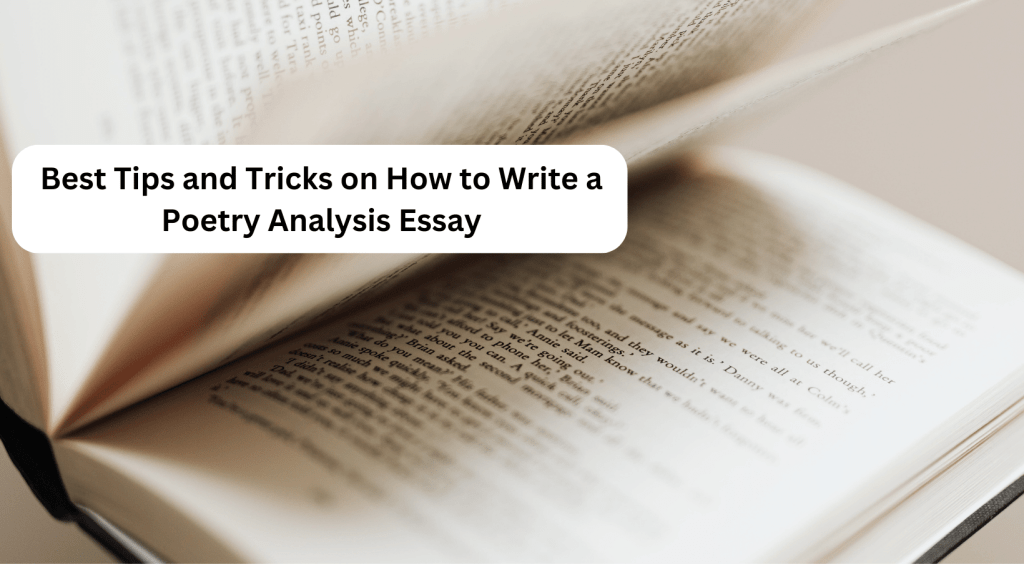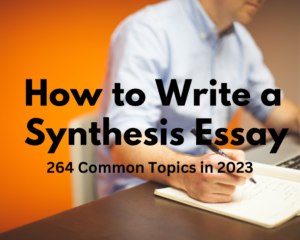According to Literary Terms, poetry is the oldest form of literature. Since the introduction of literature in institutions, students must understand how to write a poetry analysis essay. Poetry analysis involves dissecting the language and the figures of speech used by the poet. It also brings about the sharing of personal opinions concerning the poem and carefully analyzing the poetic instruments used by the poet.
Understanding poetry might be challenging for students since only the poem author knows the original intent of the poem. However, school poetry analysis essays must be completed to earn a good grade. Our experienced essay writers have provided an elaborate guide on how to write a good poem analysis essay. They also help students write a stellar poetry analysis essay.
Table of contents
- What Poetry Analysis Means:
- Understanding the Creativity in Poetry
- Choosing a Topic for a Poetry Analysis Essay
- Outline of a Poem Analysis
- How to Write Poetry Analysis Essay: Analyze a Poem
- To Analyze a Poem Carefully and Correctly, Pay Attention to:
- Still Don’t Know How to Write a Poetry Analysis Essay?
- Poetry Analysis Template
- Poetic Form
- Bottom Line
What Poetry Analysis Means:
Poetry analysis is the fundamental inspection that a poem has, done by assessing the gravity and depth of the poem. This navigates around the many aspects that the poem contains, heading with the subject, the theme, and the tone of the poem. Other aspects include the figures of speech and how the poet expresses their feeling to the reader, which brings about how the reader feels reading the poem.
Not only the inspection of the method approached in a poem, but also the poetry inspection brings about the broader picture in a particular poem, its actuality, and the innermost meaning in the poetic line, the study of the poet’s mind, the intentions of the poem and also the feeling behind the poem. Poetry analysis involves different methods helpful in investigating and reviewing the poem. At the back of every review or analysis, essential research on the poem’s author, the time frame, the possible reasons, and the environment behind the poem’s conceptualization is vital.
Understanding the Creativity in Poetry
One has to read and clearly understand and bring about a thesis development. Poetry experts recommend proper research, mostly on previous works the poet has covered. One also comes to a clear understating of what the poet is talking about in his poetic work.
Suppose you should compose a poetry analysis essay. In that case, this ideally means that you have to examine the poem carefully and clearly understand the key elements that encompass its form, the technique used, and its historical value. Further valuing the poem and emphasizing upon others these points and gathering a better understanding.
Showing as many ideas as possible that link to that poem and creating conclusions afterward is also very important.
To compose a poetry analysis essay, let’s take a quick look at the stage known as the prewriting stage.
Choosing a Topic for a Poetry Analysis Essay
- On the poem’s subject, one mainly focuses on why the poem is written or what that poem is about.
- The context or the midpoint of the content of the poem
- Who is the persona in the poem?
- The place and time where the poet wrote the poem, who and what pushed the poet, and most importantly, the key features available in the poem.
A specific topic depends on what theme you want to compose about. The message the poem is trying to air out is the theme preference. One needs to carefully inspect certain concepts, remembering the notions visible in the poem to develop a perfect theme based on evident perceptions. If one needs help figuring out the topic one should pick for one’s analysis, one should inspect other poems that are alike and have a proper topic for one’s essay analysis. One should remember to read and understand your poem properly. One should also use in-text citations when quoting from a certain poem.
Outline of a Poem Analysis
To develop a very good essay, one must sketch out the structure of the poetry analysis essay; this will ease the writing stage and quicken the process.
To create a good essay, one should sketch a poetry analysis essay outline to make the writing stage easier and even faster.
Below are some poetry analysis essay examples you can use:
- Opening paragraph – this is where one introduces the poem example by giving out the title, author, and the poem’s background.
- Body of the text – where one makes most of the analysis by linking some interesting and important ideas and referencing primarily to the poem.
- Conclusion – This is where one states the main idea, the feelings observed, and the meanings.
Introduction
To start the introduction to a poetry analysis essay, one must include the name of the person who wrote the poem and not forget the name of the poem. The author’s details, such as the poem’s publication date, should also be clear. Background information and interesting facts about the poem and the author should also be in the introduction.
Body
When writing the body of the poem, one should know that one must reference all the ideas brought upon from the poem, so one should do so and include the quotation to provide a backup in each sentence. This will be a waste if so is not done, and the comparison won’t count. One should be clear with their statements.
Conclusion
At this point, one has to take a step back from the inspection of the individual aspects of the poem and investigate its meaning as a whole. Then, one has to combine the different elements within the analysis to put off and push forward the most important and main idea.
The feelings of the poet and what they are trying to tell us are some of the questions one has to consider and configure along the way. Also, the meaning and time frame of the poem are to be considered.
For example, does it become clear from the start or progressively change as the poem ends? The last line can express a significant meaning as the poem ends; by this one, the author should be in the Poetry analysis essay ending and comment upon the piece.
How to Write Poetry Analysis Essay: Analyze a Poem
Reading the poem as much as possible and understanding it is one of the few things one must do, even before thinking about how one will draft their first draft. This usually depends on many factors, including whether the poet is alive.
Reading aloud at a time usually helps as one can identify other characters and characteristics that one may miss when reading silently and internally. While on this task, one should know that poetry is a painted art form that only uses words. The writer may take time to appreciate the art. So, one should first take notes of any thoughts about the poem, whether negative or positive.
One’s opinion may change, but first, mark the thoughts down.
To Analyze a Poem Carefully and Correctly, Pay Attention to:
Title of the Poem
Let’s take a deeper dive into the poem analysis, and by doing so, let us look at the poem’s title. When composing a poem, the poet spends much time naming the piece; thus, what can be seen from it, and what sensible questions can be possible from it?
- What do you expect? For example, the title “Alone” written by Poe Allan Edgar can be in a poem, and it is natural to say that it will be sad. When reading progresses, do the thoughts change?
- Which literature style is used? For example, the work may be His Last Sonnet” by John Keats. By looking, one can conclude that a poem can be in sonnet form, and if not, why do poet mislead their audience?
- What is the poem about? The poem “How Do I love thee? Let Me Count the Ways” by Elizabeth Barrett indicates what can be added to expect, but when it differs from the above title, what would it suggest?
Poetry Literal Meaning
Following our customized writing services, there is the need for one to have a clear understanding of as many words as they can use. Afterward, scan all known words and phrases and also check them. Writers should also check the meaning of the most repeated words. Some words may have different meanings according to time. For example, one century ago, words may differ; thus, one should bring along the internet to search for the meaning of these words. In addition, the writer must research places and the kind of people, their culture, and their time of existence to understand the poet’s attitude visible in the piece deeply. Some patterns may be along the text and even the poem’s theme.
Structure of a Poem
Observing a poem’s structure will reveal added information, thus paying close attention to this point. Observe the arrangements and sections thus it will unlock many questions:
- What does each part discuss?
- In what way does each part link to the other?
- Are formal separations evident?
- What logical sense is evident?
- Is emotional sense evident?
- Does strict format communicate anything conserving the poet?
- Is having no strict format revealing something?
Once one observes the structure, it brings out the possibility of digging deeper and investigating the poetry analysis essay on how the speaker talks in the poem to the audience.
Intonation, the Tone of Poetry
Speaker
It is now possible for one to observe the poet and have an image of the details from them. Is a clear image of the gender and age of the poem’s speaker? Can race or religion be visible? Is it clear if the speaker is communicating directly to the reader? If the speaker is not communicating to the reader, what is the character the poet has come up with to share his ideas and messages? Do the character and the persona have differences, and what can be observed and noted from this? Is the mood of the speaker evident currently? Are they sad or happy? How did you find this evident in the poem?
Recipient
When the poet clearly understands the possibility of moving about, who or what the poem was created for. Then the purpose of poetry is visible, and the purpose is also put under scrutiny. The poet may not need a response from the audience; thus, the poet gives statements, thus expressing themselves.
For example, a poem about spring can be a happy statement showing that winter has just ended. Observing from a different perspective may be an attempt to attract one’s attention or even just instruct one to plow the field.
Purpose of the poem
What the poem is talking about can identify the purpose, as it will always be what the author describes. The poem’s theme and what it says about the work can also be visible. Is there any interaction between them, and what does it tell things about the work? A vital factor to consider is the time frame. For example, the poet’s goal may change, and the reason for the change? Did the specific purpose overcome the test on time? Is it the best indicator of winning?
Imagery and Language in Poetry
To this point, analyzing the literal information available was the only thing possible and can be referred to as the ‘denotative meaning.’
Imagery
This is where one should look for images in the text and inspect why they appear to be depicted. For example, if the author has decided to communicate about the moon, this can set the time or mood in the poem. One should also look for image groups, describe patterns in between, and what can be noted.
Symbols
When looking for symbolism in a certain piece, one should look for an event or a physical object. This includes people, places, and non-physical entities; examples are emotions.
For example, Take a bird that is freely flying through the air; this can show freedom and freedom from usual conforms.
Poetic Devices
In one’s analysis, one should observe the examples of the techniques. They are metaphors, similes, alliteration, and also personification, just to mention but a few. When something is being compared within the piece using metaphor, one should look at how each is linked to the other and how it is expressed. One should use every available clue to understand the poet’s mind better.
Music and the Poem
Music and poetry have a connection and thus can be compared to this because of the history of both for many years.
Things for one to look out for to compare the two:
- Rhyme – a wide variety of techniques archive rhyme in poetry. Once you have identified this, look at how it affects work and maybe make it more humorous. Keenly observe unusual patterns; an example is rhyming between the lines and not only at the end of each sentence. Reading out loud may also aid in getting what this communicates.
- Sound effects – how different sounds are described may be powerful. By using different types of voices, writers should observe what impacts the text and why it does so.
- Breaking the rules – meter, as well as rhyme, may have some specific rules. If the poet breaks the rules and creates something else, what does this do to the work?
Still Don’t Know How to Write a Poetry Analysis Essay?
Please look at this guide that will help you to analyze poetry correctly. There are also some handy tips available for you:
- Choose a suitable poem – where possible. We advise you to choose a poem you want to analyze. The more a poem interests you, the easier it will be to analyze and the easier the task.
- Read it thoroughly – the one step that is very important in poetry analysis is to read and understand carefully. You can’t go over it without doing it. You can read it aloud, if possible, for a better understanding.
- Always double-check the meaning of words – when you read the poem, remember to check out the meaning of all words and remember them.
- Collect typical details all you need – to compose a compelling essay, you will need to carefully study the poem’s structure, background information, main contents, and the interesting and best ideas.
- Analyze hidden meaning – when investigating a poem, make sure that you look beyond the visible words. It would help if you focused on finding the broader and hidden ideas the author tries to express to their audience.
- Create an outline – once you perfectly analyze the poem, note down your essay and the plan.
- Authentication and edit – lastly, when your essay is finally ready, keenly revise and perfectly polish your essay to the most perfect.
Poetry Analysis Template
For you to compose a quality poetry analysis essay, follow the template below or make an essay order with our qualified professionals.
Introduction
- Poems name
- Poets name
- Publication of the date
- Background and any other important information
Form of the Poem
- Structure of the poem
- Rhyme of the poem
Meaning of the Poem
- The overall meaning of the poem
- Relation of the poem to our life
Poetic Techniques
- Literary and poetic devices
Poetic Form
Poems are usually written similarly; one must identify which structure the poet used in constructing the poem. The poem’s mold is widely used in stanzas, punctuation, rhythm, and rhymes. Carefully inspect the number, not also forgetting the length of each stanza. Does the rhythm affect the meaning brought upon by the poem? Is there little or more in number plantations, is the rhyme consistent all the way through, or is it changing, and how does this contribute to the final meaning of the poem?
Message Aired Out by the Poem, The Theme and Meaning
At this point, we will focus on the topic, the important idea, or the main issues of the poem. There are many types and encrypted layers of hidden meaning in a poem.
- Meaning: The surface meaning is what is physically taking place in the poem that a reader can sense
- Deeper meaning: this is the innermost idea of the poem, telling what the poem is all about.
- Theme: this is the hidden meaning evident in almost every line, which will always depict the message concerning life.
Many topics are covered in poems; poetry analysis essay example topics can be about life, death, love, birth, memory, war, nature, sexuality, age, race, faith, experience, creator, and religion, to mention but a few.
The Tone of a Poem
Tone usually indicates the author’s mood and attitude, not forgetting their language when writing the poem. Always inspect the different languages used in the pome. Examples are morbid, reflective, solemn, judgmental, regretful, cheerful, ironic, critical, optimistic, informal, frustrated, scornful, solemn, and formal.
Literary Devises That Are Used in Poems
You will need to find out the many types of literary devices in the kind of figures of speech used in poetry by the poet. Inspect the techniques and give out a suggestion for their use in the poem per the author. The poem may include irony, symbol, hyperball, metaphor, repetition, alliteration, dissonance, oxymoron, and allegory.
Feel and Conclusion of the Poem
In conclusion, analyze the feelings and the emotions related to the poem of an author and the feelings that come along as you read. This is the most important part of analyzing the poem, as one will review the centermost parts of the poem. The poet’s feelings, target audience, intentions, and if the poem reflects the persona in the poem and if it matches the poet or not.
Bottom Line
The guide above should help you understand how to navigate a poetry analysis essay. Still don’t understand how to write a poetry analysis essay? Our experienced essay writers will help you construct an essay you need to turn around. Contact us for an estimate.





Pingback: UC Essay Prompts: 8 Prompts to Earn Your Spot